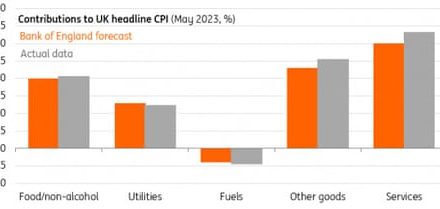When a reader recently asked me to look at how many teachers were leaving the occupation, I assumed the numbers would be high. Between wage stagnation and the near impossible working conditions during the height of Covid, I guessed that the outlook for US teaching jobs would be bleak.
The data tells a different story. Yes, a high number of people are exiting the occupation each year (148,000 on average) but the US Bureau of Labor Statistics still expects that a huge number of people will enter the field, too. Over the period from 2021 to 2031, the bureau projects that there will be an additional 230,000 job openings in the US for teachers (including “preschool, elementary, middle, secondary, and special education teachers”). This is partly because of the number of teachers that is retiring but it’s also because teaching, unlike other US jobs, can’t be replaced with automation any time soon.
I found myself returning to the initial question, though, especially given concerns about artificial intelligence. I went back into the Excel spreadsheet wondering which jobs are expected to shrink the most. Cashiers are at the top of the list. By 2031, it’s expected that 335,000 fewer jobs will be available to people working as cashiers. That’s because those roles are especially vulnerable to erasure. According to a 2017 report from the University of Delaware, “cashiers are considered one of the most easily automatable jobs in the economy”. But it’s also because a huge number of people in the US work in cashier roles – over three million of us work a cash register. Turnover is also super high. Each year, about 33,000 of these jobs will disappear but so many people enter and leave this profession, or change jobs within it, that it can be hard to spot the changes taking place in any given year.
Other jobs that will disappear quickly include “assemblers and fabricators” (115,000 fewer jobs), telemarketers (21,000 fewer), farmers and ranchers (down 24,000) and postal service workers (down by 29,000).
The jobs with the highest growth numbers are, perhaps unsurprisingly, in healthcare support. As with teaching, we’re a long way away from a robot being able to perform these skills. It takes human attributes to reliably dress a wound or help someone down the stairs. And as the US population ages, there will be high demand for that kind of help. It’s expected that an extra 1.2 million people will work in these jobs by 2031.
Join the exciting world of cryptocurrency trading with ByBit! As a new trader, you can benefit from a $10 bonus and up to $1,000 in rewards when you register using our referral link. With ByBit’s user-friendly platform and advanced trading tools, you can take advantage of cryptocurrency volatility and potentially make significant profits. Don’t miss this opportunity – sign up now and start trading!








Recent Comments